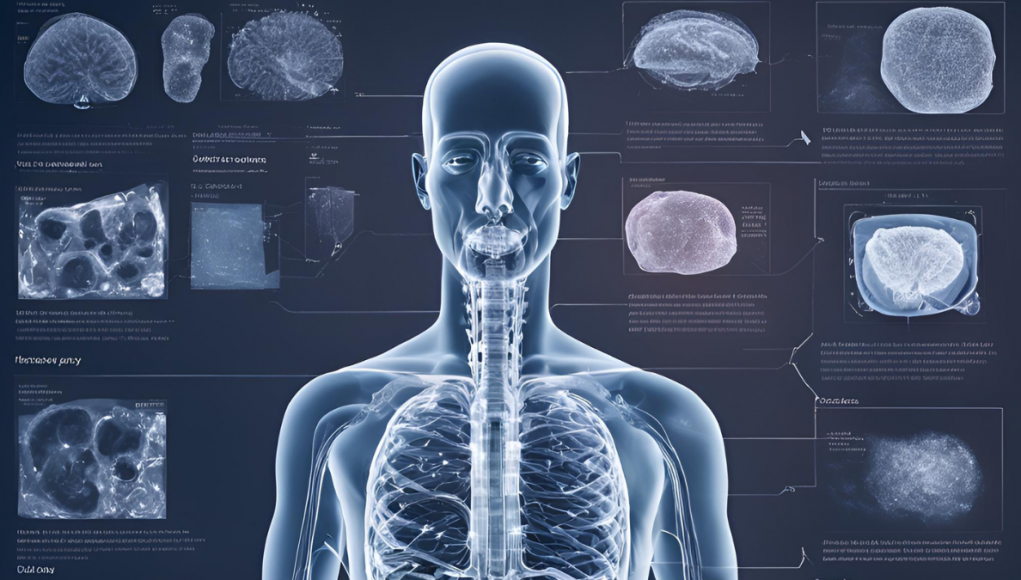Artificial Intelligence (AI) is transforming the field of medical imaging, offering advanced tools that can analyze radiological images with remarkable speed and accuracy. From detecting early-stage cancers to identifying critical conditions like strokes and heart diseases, AI tools are empowering radiologists and clinicians to enhance diagnostic capabilities while improving patient outcomes. In this article, we will explore some of the best AI Tools for Medical Imaging Analysis currently shaping the future of medical imaging analysis, discussing their features, uses, pros, cons, and overall impact on healthcare.
Introduction
Medical imaging is a cornerstone of modern diagnostics, but interpreting complex images such as CT scans, MRIs, and X-rays can be time-consuming and prone to human error. AI has emerged as a game-changer in this domain, providing tools that automate image analysis, speed up diagnosis, and reduce the workload on healthcare professionals. From cloud-based platforms to portable devices, AI tools for medical imaging cover a wide range of specialties, including cardiology, oncology, and emergency care.
Best AI Tools for Medical Imaging Analysis
In the sections that follow, we will delve into some of the leading AI Tools for Medical Imaging Analysis available today. Each of these AI Tools for Medical Imaging Analysis is designed to tackle specific challenges in medical imaging, helping healthcare providers detect and prioritize critical conditions more efficiently. Whether it’s real-time prioritization in radiology or the early detection of life-threatening diseases, AI is revolutionizing the way medical images are analyzed.
1. Aidoc
Overview
Aidoc is an AI-powered radiology solution designed to improve the workflow of radiologists by identifying and prioritizing critical cases. By utilizing advanced deep learning algorithms, Aidoc flags urgent medical conditions, such as brain hemorrhages and strokes, from medical images, enabling faster and more accurate diagnosis. The tool’s real-time capabilities are essential in environments where swift intervention can significantly impact patient outcomes.
Features
- AI-Driven Prioritization of Cases: Aidoc’s algorithms scan images in real-time to detect critical conditions, prioritizing these cases in the radiologist’s workflow.
- Deep Learning Algorithms: The system is built on advanced deep learning models that process images from CT, MRI, and X-rays to detect abnormalities.
- Seamless PACS Integration: Aidoc integrates with existing PACS (Picture Archiving and Communication Systems), allowing radiologists to maintain their workflow while benefiting from AI analysis.
- Broad Modality Support: Aidoc supports multiple imaging modalities, including CT scans, MRI, and X-rays.
Uses
- Identifying critical conditions like strokes, hemorrhages, and fractures in real-time.
- Improving the workflow of radiologists by automating image analysis.
- Assisting in clinical decision-making by providing faster results for critical patients.
Pros
- Significant reduction in diagnostic time for critical cases.
- Seamless integration into existing systems.
- Broad modality support ensures flexibility in usage.
Cons
- Limited to certain types of critical conditions (e.g., hemorrhages, fractures).
- Initial integration might require technical support.
Verdict
Aidoc is a highly effective AI tool for radiologists who need to prioritize critical cases. Its real-time image analysis helps speed up diagnosis and treatment, particularly in emergency situations, making it a valuable addition to healthcare institutions focused on patient outcomes.
2. Zebra Medical Vision
Overview
Zebra Medical Vision is an AI platform that provides automated analysis of medical imaging data to assist in early diagnosis. The tool is trained to detect a wide variety of medical conditions, from liver diseases to cancers, by using advanced machine learning models. Zebra Medical Vision’s algorithms are designed to help radiologists and healthcare providers interpret medical images more efficiently, reducing the likelihood of diagnostic errors.
Features
- AI-Driven Algorithms for Automated Image Analysis: Zebra Medical Vision uses deep learning to analyze CT, MRI, and X-ray images, offering automatic insights into potential abnormalities such as cancers, cardiovascular diseases, and liver issues.
- Multimodal Imaging Support (X-ray, CT, MRI): It supports a wide range of imaging modalities, ensuring flexibility across various medical specializations.
- Continuous Algorithm Updates: Zebra Medical’s models are continuously updated based on new data and feedback, ensuring the latest diagnostic capabilities are available.
- Cloud-Based Deployment: This tool offers a cloud-based interface, providing seamless access from multiple locations, and integrating easily into existing clinical workflows.
Uses
- Detecting early-stage cancers, liver diseases, cardiovascular issues, and bone fractures.
- Providing diagnostic support to radiologists by automating image interpretation.
- Reducing radiologist workload by offering pre-analyzed image reports.
Pros
- Accurate early detection of diseases, reducing human error.
- Continuous updates ensure state-of-the-art analysis.
- Cloud-based deployment offers flexibility in accessibility.
Cons
- Requires integration with cloud systems, which may not be feasible in all healthcare settings.
- Limited to the range of diseases it has been trained on, although this is constantly expanding.
Verdict
Zebra Medical Vision offers a robust AI-driven platform for automating the detection of various medical conditions. Its ability to support multiple imaging modalities and offer cloud-based deployment makes it a flexible and valuable tool for healthcare providers seeking to enhance diagnostic accuracy.
3. Arterys
Overview
Arterys is a cloud-based AI platform designed for medical imaging analytics, focusing on cardiovascular imaging, lung imaging, and oncology. By leveraging deep learning and advanced visualization techniques, Arterys delivers real-time analytics and provides automated insights that help physicians make faster, more informed decisions. It also provides collaboration features, allowing radiologists and clinicians to access the platform from any location.
Features
- Real-Time Image Analysis: Arterys allows for the real-time analysis of MRI and CT scans, offering diagnostic support and predictive insights.
- Cardiac MRI and CT Analysis: Arterys specializes in cardiovascular imaging, providing automated measurements and anatomical insights for complex heart conditions.
- Lung Cancer Detection: The platform includes advanced algorithms for detecting lung nodules, helping in early lung cancer diagnosis.
- Cloud-Based Collaboration: Arterys allows multiple clinicians to collaborate on cases remotely, making it ideal for multi-site healthcare providers.
Uses
- Cardiac and vascular MRI/CT analysis, offering real-time insights.
- Detecting and monitoring lung cancer and other pulmonary diseases.
- Enhancing collaboration among clinicians with cloud-based remote access.
Pros
- Highly specialized for cardiovascular and lung imaging.
- Real-time, cloud-based analysis for enhanced efficiency.
- Facilitates collaboration between healthcare professionals.
Cons
- Primarily focused on cardiac and lung imaging, limiting its use for other specialties.
- Dependence on cloud infrastructure may be a barrier in some healthcare environments.
Verdict
Arterys is a cutting-edge AI platform for real-time medical imaging analysis, with particular strength in cardiovascular and pulmonary imaging. Its cloud-based collaborative features make it ideal for multi-disciplinary teams, although its focus on specific specialties might limit broader use.
4. Qure.ai
Overview
Qure.ai focuses on providing AI-powered solutions for interpreting head CT scans, chest X-rays, and other imaging modalities. It is particularly useful in emergency situations where quick and accurate interpretation is critical, such as trauma cases or assessing COVID-19 patients. The tool’s algorithms are trained on large datasets, helping radiologists detect critical conditions like intracranial hemorrhages, strokes, and lung abnormalities.
Features
- CT Head Scan Analysis: Qure.ai specializes in analyzing head CT scans, detecting conditions like strokes, brain hemorrhages, and skull fractures in a matter of seconds.
- Chest X-ray Interpretation: The tool is also optimized for chest X-rays, offering diagnostic insights for lung diseases, pneumonia, and tuberculosis.
- COVID-19 Detection: Qure.ai developed specialized models for detecting COVID-19-related lung abnormalities in chest X-rays, which has been widely adopted during the pandemic.
- AI Reporting: The tool generates automated reports with insights into detected conditions, offering a structured format for radiologists and physicians.
Uses
- Quick interpretation of head CT scans in trauma or stroke cases.
- Detecting lung conditions like pneumonia and tuberculosis from chest X-rays.
- COVID-19-related lung abnormality detection.
Pros
- Quick and accurate interpretation of head CT scans and chest X-rays.
- Widely used in emergency care and trauma settings.
- Automated reporting reduces workload for radiologists.
Cons
- Focused on specific imaging types, limiting broader usage in other medical areas.
- Requires proper integration into existing workflows.
Verdict
Qure.ai is an essential tool for emergency medical imaging interpretation, especially in head CT and chest X-ray cases. Its high accuracy and quick response make it ideal for trauma and emergency departments, although its focus on specific imaging limits its applicability to other fields.
5. VUNO Med
Overview
VUNO Med is a comprehensive suite of AI-powered solutions tailored for analyzing medical imaging data, including X-rays, CT scans, and MRIs. VUNO focuses on offering diagnostic support for various diseases, including cancers, cardiovascular issues, and brain pathologies, and aims to improve accuracy and reduce radiologist workload.
Features
- Automatic Disease Detection: VUNO Med’s algorithms are designed to automatically detect diseases such as cancer and cardiovascular issues from medical images, streamlining the diagnostic process.
- Multi-Modality Support: The tool works across multiple imaging modalities, including X-ray, CT, and MRI scans, offering a broad spectrum of diagnostic insights.
- Deep Learning Models: VUNO Med’s deep learning models have been trained on large datasets of imaging data, enabling high accuracy in detecting diseases.
- Customizable Workflows: The platform can be customized to integrate seamlessly into existing hospital systems, ensuring it fits into various workflows.
Uses
- Automatic detection of cancers and cardiovascular conditions from CT, MRI, and X-ray images.
- Streamlining workflows by providing pre-analyzed image reports to radiologists.
- Reducing the time required for diagnosing complex cases.
Pros
- High accuracy in detecting multiple diseases across various modalities.
- Seamless integration into hospital workflows.
- Automatic disease detection reduces radiologist workload.
Cons
- May require significant technical integration.
- Limited use in smaller medical facilities without advanced imaging technology.
Verdict
VUNO Med provides a broad set of AI solutions for medical imaging analysis, particularly for diagnosing complex diseases like cancer. Its multi-modality support makes it a versatile tool for larger hospitals, though smaller facilities may find it harder to integrate.
6. Imagen Technologies
Overview
Imagen Technologies specializes in AI-powered diagnostics for musculoskeletal injuries and abnormalities, particularly in X-ray imaging. Its algorithms are trained to identify fractures, dislocations, and other musculoskeletal conditions, making it particularly useful in orthopedic and emergency medicine departments.
Features
- Musculoskeletal Diagnostics: Imagen’s AI algorithms are specifically designed to analyze X-ray images and detect fractures, joint dislocations, and other musculoskeletal conditions.
- FDA-Approved Algorithms: The tool is FDA-approved for certain diagnostic tasks, providing reliability and safety for clinical use.
- Real-Time Reporting: Imagen offers real-time analysis and report generation, reducing the time needed to diagnose patients in emergency settings.
- Seamless Integration into Radiology Workflows: Imagen integrates directly into existing radiology workflows, reducing the administrative workload for radiologists and improving efficiency.
Uses
- Diagnosing musculoskeletal conditions such as fractures and dislocations using X-ray images.
- Supporting emergency departments in quickly identifying injuries.
- Assisting orthopedic specialists in diagnosing bone and joint conditions.
Pros
- High accuracy in detecting musculoskeletal conditions.
- FDA approval ensures clinical safety and reliability.
- Reduces the burden on radiologists by automating report generation.
Cons
- Limited to musculoskeletal conditions, reducing broader applicability in other specialties.
- Focused on X-rays, limiting its use in advanced imaging modalities like MRI or CT.
Verdict
Imagen Technologies is a highly specialized tool for musculoskeletal diagnostics, making it ideal for orthopedic departments and emergency rooms. Its FDA-approved algorithms and real-time reporting enhance clinical workflows, though its focus on specific conditions may limit its broader use.
7. DeepMind Health (Google Health)
Overview
DeepMind Health, now part of Google Health, develops AI tools for analyzing medical images, particularly focusing on retinal disease detection and other diagnostic imaging tasks. DeepMind’s advanced deep learning models have been applied to various medical imaging tasks, achieving remarkable accuracy, often exceeding that of human experts in some areas.
Features
- AI for Retinal Disease Detection: DeepMind’s algorithms can analyze retinal scans to detect conditions such as diabetic retinopathy and age-related macular degeneration, offering precise diagnostic support to ophthalmologists.
- Advanced Image Segmentation: The tool uses state-of-the-art image segmentation techniques to delineate anatomical structures with high accuracy, improving the precision of diagnosis.
- Predictive Models for Disease Progression: DeepMind has developed predictive models that can forecast the progression of certain chronic diseases, such as diabetic eye disease, helping clinicians intervene earlier.
- Clinical Validation and Regulatory Approvals: DeepMind Health tools have undergone clinical trials and are being validated for regulatory approval, ensuring their safety and efficacy in clinical settings.
Uses
- Diagnosing retinal diseases using AI analysis of retinal scans.
- Assisting ophthalmologists in identifying conditions like diabetic retinopathy and glaucoma.
- Predicting the progression of chronic diseases for earlier intervention.
Pros
- High accuracy in detecting retinal diseases, often surpassing human experts.
- Predictive models help clinicians intervene early, improving patient outcomes.
- Thorough validation and clinical trials ensure safety.
Cons
- Primarily focused on retinal imaging, limiting broader applicability in other specialties.
- Limited availability due to the ongoing regulatory approval process.
Verdict
DeepMind Health offers groundbreaking AI tools, particularly in the area of retinal disease detection, with high accuracy and predictive capabilities. However, its focus on specific imaging modalities and ongoing regulatory approval processes may limit its immediate availability in some regions.
8. Lunit
Overview
Lunit specializes in AI-powered diagnostic tools, focusing on cancer detection and lung disease analysis. It is widely used for interpreting mammography and chest X-rays, offering high accuracy in detecting lung nodules, breast cancer, and tuberculosis. The tool is deployed in over 100 hospitals worldwide, providing proven clinical results.
Features
- Cancer Detection in Mammography: Lunit’s AI models are trained to detect breast cancer in mammograms, offering early-stage cancer detection with high sensitivity and specificity.
- Chest X-Ray Analysis: The tool provides AI-driven analysis of chest X-rays, detecting abnormalities such as lung nodules, pneumonia, and tuberculosis, helping clinicians in early diagnosis.
- Global Deployment: Lunit’s AI solutions are deployed in more than 100 hospitals globally, demonstrating their reliability in real-world clinical settings.
- AI-Assisted Report Generation: The tool helps radiologists by pre-filling reports with detected abnormalities, reducing manual effort and improving workflow efficiency.
Uses
- Early-stage cancer detection through mammography analysis.
- Detecting lung diseases such as tuberculosis and lung cancer from chest X-rays.
- Enhancing clinical workflows by automating report generation.
Pros
- High accuracy in detecting breast cancer and lung conditions.
- Widely adopted in hospitals around the world, proving its clinical utility.
- Automated report generation helps radiologists save time.
Cons
- Primarily focused on breast and lung imaging, limiting applicability in other areas.
- Some settings may require significant initial setup and integration.
Verdict
Lunit offers cutting-edge AI solutions for cancer detection and lung disease diagnosis, with a strong track record in clinical deployment. Its high accuracy and global use make it a valuable tool for hospitals, though its focus on specific conditions may limit broader use.
9. Infervision
Overview
Infervision is an AI-powered tool designed to enhance medical imaging analysis, with a focus on lung disease detection and early-stage cancer diagnosis. It leverages deep learning algorithms to detect lung nodules and other abnormalities in chest X-rays and CT scans, helping radiologists make faster, more accurate diagnoses.
Features
- Lung Nodule Detection: Infervision’s AI models are trained to detect lung nodules from CT scans, providing early diagnosis of lung cancer.
- Chest X-Ray Interpretation: The tool also analyzes chest X-rays to detect conditions such as pneumonia, tuberculosis, and other lung diseases.
- AI-Assisted Image Enhancement: Infervision enhances medical images using AI, improving the clarity of scans for more accurate diagnosis.
- Workflow Integration: The tool integrates seamlessly into existing radiology workflows, providing pre-analyzed results directly to the radiologist’s workstation.
Uses
- Early detection of lung cancer through AI analysis of chest CT scans.
- Diagnosing lung conditions such as pneumonia and tuberculosis from X-rays.
- Improving radiology workflows by automating the detection of lung abnormalities.
Pros
- High accuracy in detecting lung nodules and diseases.
- Easy integration into existing radiology systems.
- Image enhancement features improve diagnostic accuracy.
Cons
- Limited to lung disease and cancer detection, reducing broader applicability.
- Initial integration may require technical expertise.
Verdict
Infervision is one of the advanced AI Tools for Medical Imaging Analysis for detecting lung diseases and early-stage lung cancer. Its image enhancement and workflow integration features make it a valuable asset in radiology departments focused on pulmonary diseases, though its narrow focus limits its general utility.
10. Butterfly Network
Overview
Butterfly Network revolutionized the medical imaging industry with its portable AI-powered ultrasound device, Butterfly iQ. This device allows clinicians to perform real-time imaging and diagnostics at the point of care. Butterfly iQ is powered by AI algorithms that assist in the interpretation of ultrasound images, making it accessible for various medical practitioners.
Features
- Portable Ultrasound Device: Butterfly iQ is a handheld ultrasound device that connects to a smartphone or tablet, providing on-the-go imaging capabilities.
- AI-Assisted Imaging: The device’s AI algorithms help clinicians interpret ultrasound images in real-time, offering diagnostic insights at the bedside.
- Multispecialty Use: The device can be used across various medical specialties, including emergency medicine, cardiology, and obstetrics.
- Cloud-Based Storage and Sharing: Butterfly iQ stores ultrasound images in the cloud, allowing easy sharing with other clinicians for collaborative diagnostics.
Uses
- Real-time diagnostic imaging at the point of care.
- Ultrasound imaging for various medical specialties, including emergency and obstetric care.
- AI-assisted interpretation of ultrasound images.
Pros
- Portable and easy to use, making it accessible to clinicians in various settings.
- AI-assisted diagnostics improve accuracy and reduce interpretation time.
- Cloud-based storage allows easy sharing and collaboration.
Cons
- Limited to ultrasound imaging, reducing applicability in other imaging modalities.
- Requires training for clinicians unfamiliar with ultrasound devices.
Verdict
Butterfly iQ is a game-changing tool for point-of-care diagnostics, offering AI-powered ultrasound imaging that can be used across multiple specialties. Its portability and ease of use make it ideal for emergency and bedside care, though its focus on ultrasound limits its broader applicability.
11. HeartFlow
Overview
AI Tools for Medical Imaging Analysis
Features
- Non-Invasive Coronary Artery Analysis: HeartFlow uses CT angiography to create detailed 3D models of coronary arteries, providing a non-invasive alternative to traditional diagnostic methods.
- Blood Flow Simulation: The platform applies computational fluid dynamics to simulate blood flow in the coronary arteries, helping clinicians assess the severity of arterial blockages.
- Cloud-Based Solution: HeartFlow is cloud-based, allowing clinicians to access the results from any location, facilitating collaboration and remote diagnostics.
- FDA-Approved: HeartFlow is FDA-approved for coronary artery disease diagnosis, ensuring clinical safety and reliability.
Uses
- Non-invasive diagnosis of coronary artery disease using CT angiography.
- Simulating blood flow in the coronary arteries to assess blockages.
- Enhancing cardiovascular diagnostics through 3D modeling and simulation.
Pros
- Non-invasive diagnostic tool, reducing the need for invasive procedures like catheterization.
- High accuracy in detecting coronary artery blockages.
- Cloud-based access allows for easy collaboration among cardiologists.
Cons
- Limited to cardiovascular imaging, reducing its use in other specialties.
- Expensive setup and implementation costs for smaller clinics.
Verdict
HeartFlow is a state-of-the-art tool for non-invasive coronary artery disease diagnosis. Its blood flow simulation capabilities and 3D modeling provide critical insights into cardiovascular health, making it a valuable tool for cardiologists, though its specialized focus limits its use outside of cardiac care.
Conclusion
AI Tools for Medical Imaging Analysis
Also Read: SaaS for Education: Transforming Classroom Management and Learning Tools





